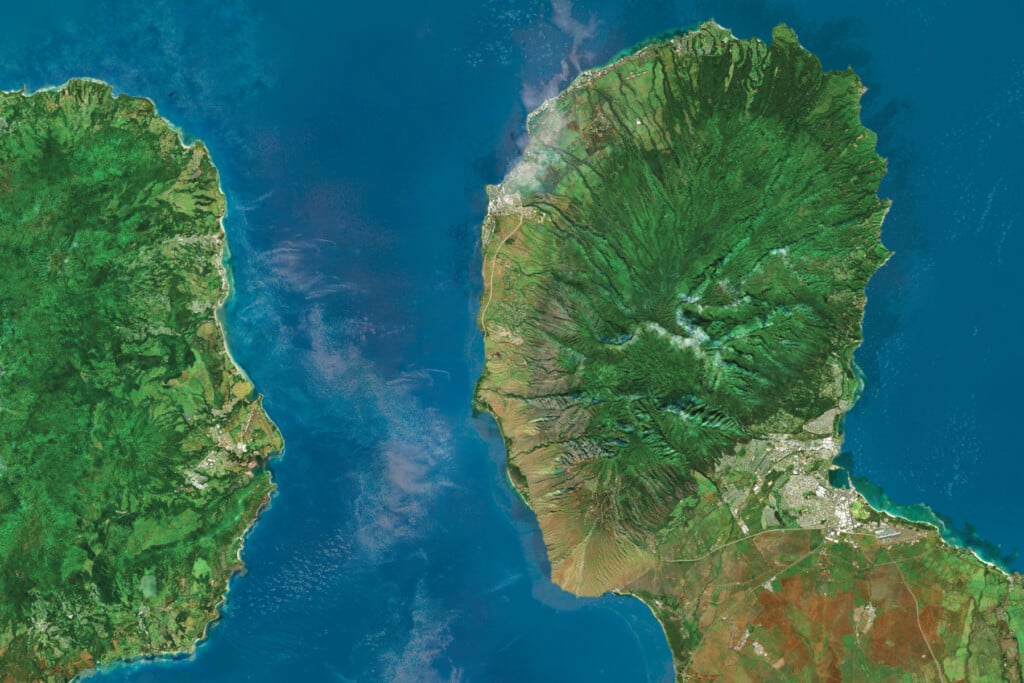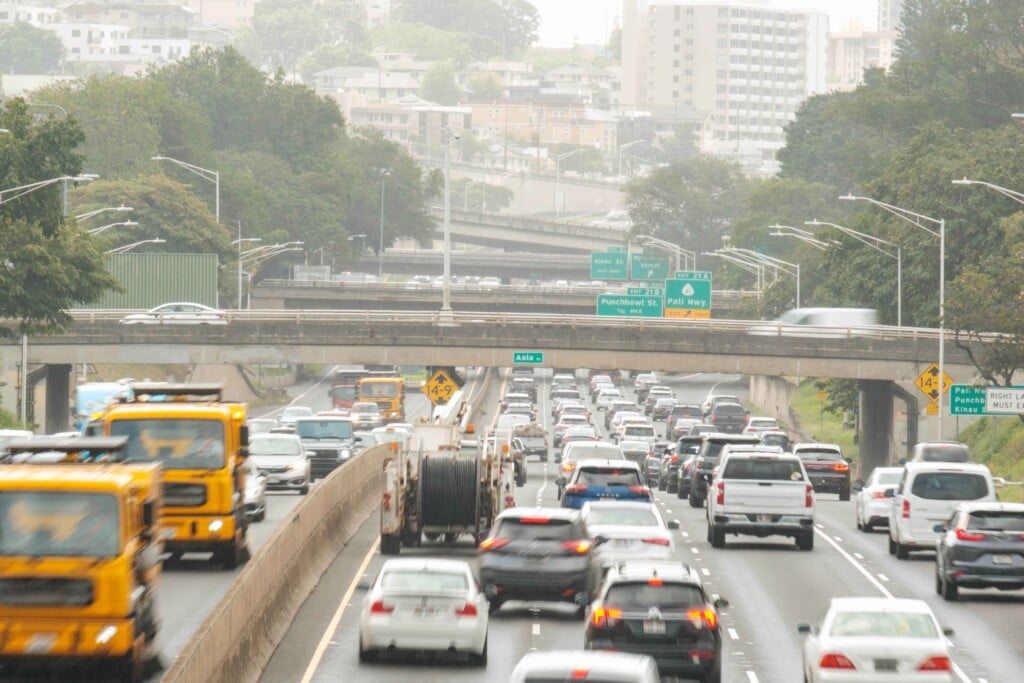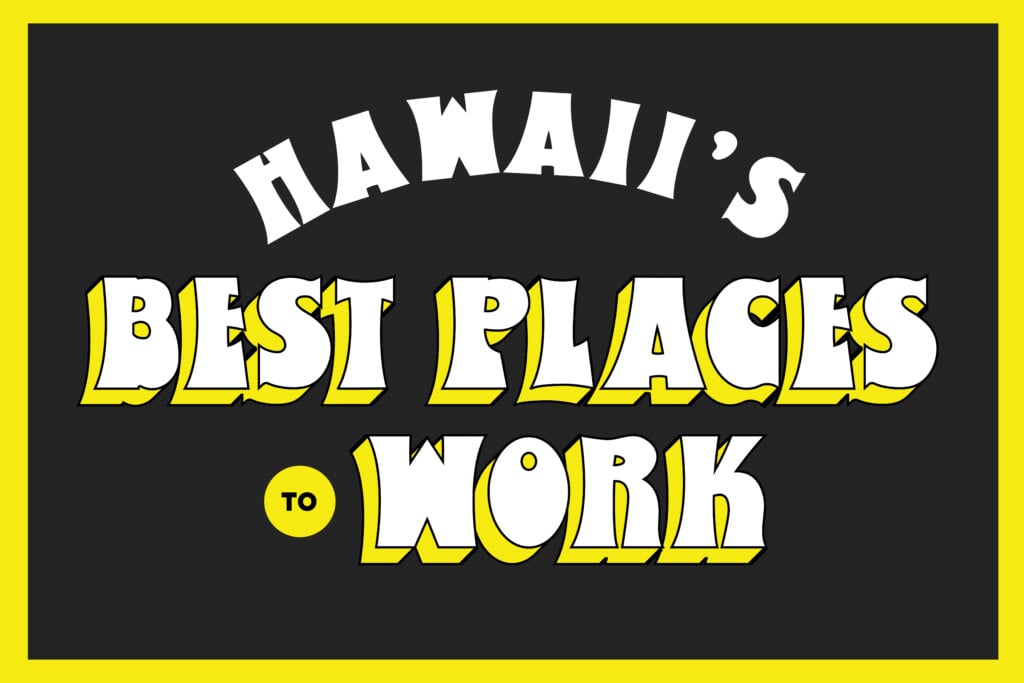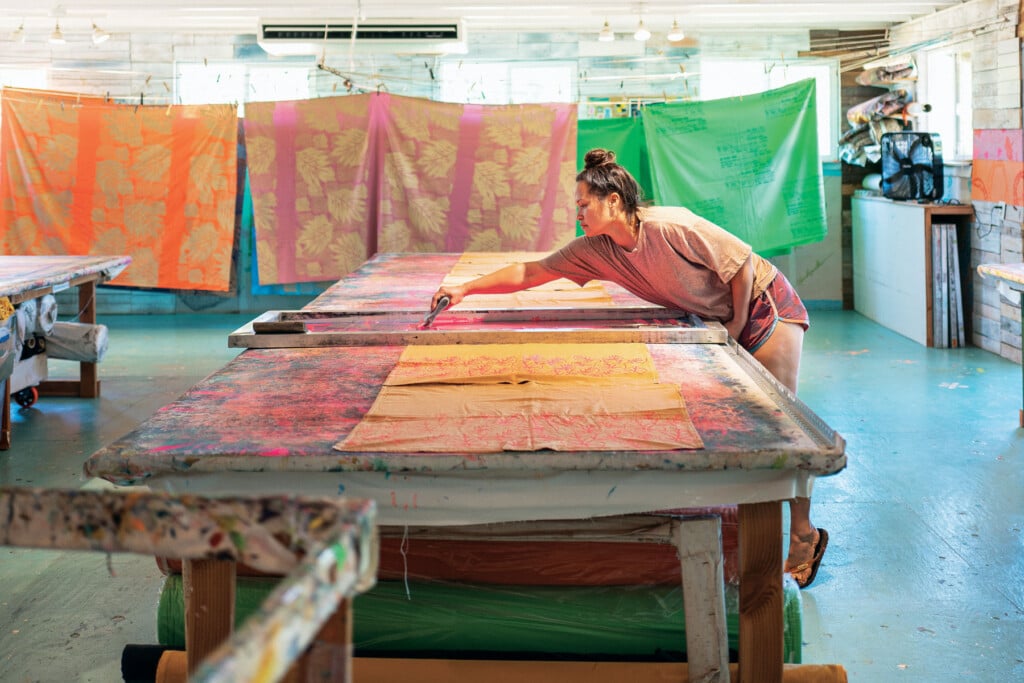Catholic Charities Hawai‘i Celebrates 75 Years of Helping People in Need
The social service agency serves kūpuna who live at home, immigrants, troubled youth and homeless people of all faiths and cultures.
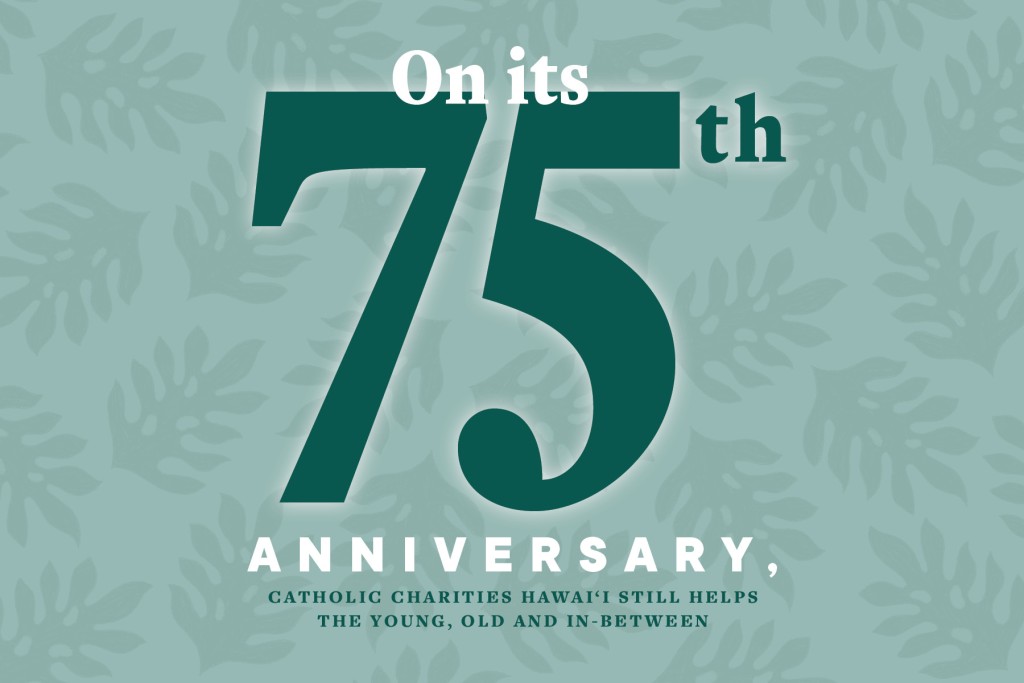
Catholic Charities Hawaiʻi was established 75 years ago to help locals in need. Since then, the social service agency has touched hundreds of thousands of lives across the state.
The agency serves all people regardless of their faith or culture, focusing on vulnerable populations such as kūpuna who want to continue living independently, immigrants, behaviorally challenged youths and homeless individuals and families.
During the pandemic, Catholic Charities Hawai‘i’s reach extended even further as unemployment skyrocketed and tens of thousands of households fell behind on rent. The agency served 40,000 people a year before the pandemic; during the pandemic, that number doubled. It boosted its staff from 250 to 400, and increased its gross revenue from $30 million a year to $110 million.

Catholic Charities of the Diocese of Honolulu was established by the Maryknoll Sisters, who arrived in Honolulu to provide social services in the midst of WWII. The organization was incorporated on July 29, 1947. | Photo: courtesy of Catholic Charities Hawaiʻi
“So many lives have been touched and changed by the work of Catholic Charities Hawai‘i,” says Jerry Rauckhorst, who served as the agency’s president and CEO from 1995 to 2016 and now chairs the agency’s 75th anniversary celebration. “And we’ve just been blessed to have the right people and the financial support that’s enabled us to be able to do that.”
Beginning of a Legacy
CCH was created through the generosity of women. Those women included members of the Catholic Women’s Guild, which in 1859 began providing food, clothing and medical aid to immigrant plantation workers, and the Maryknoll Sisters, who came from New York in 1944 at the request of Bishop James Sweeney to provide social services starting toward the end of World War II.
The initial group of four sisters, led by Sister Victoria Francis, was followed by others and helped to establish the Catholic Charities of the Diocese of Honolulu on July 29, 1947. The sisters and their small staff helped provide family counseling, child care, immigrant services and more.
The organization later built its headquarters at 250 S. Vineyard Blvd.; it opened in 1965. In the 1970s and ’80s, CCH expanded to the Neighbor Islands and added services to help the elderly and refugees, families experiencing child abuse and neglect, foster youth, and women with unplanned pregnancies.
More specialized services were added in the 1990s and 2000s to help victims and perpetrators of domestic violence, plus homeless families and babies with complex medical issues. And CCH formed the Catholic Charities Housing Development Corp. in the late ’90s to address the need for affordable housing.
The agency also started the first Men’s March Against Violence in 1995, shortly after Rauckhorst signed on. He says Joe Bloom, a clinical therapist in the agency’s counseling program, was part of a committee charged with planning events for domestic violence awareness month. He was the only man at the table with five to ten women. They looked at Bloom and asked him what the men were going to do, Rauckhorst says.
“The whole idea was to change the social thinking that this issue is not a women’s issue,” he says. “It’s a men’s issue. And until men take ownership of domestic violence there will probably always be an increase. That’s just the way it is. So that was kind of like the underlying purpose of the men’s march.”
Unifying Mission
The agency’s mission is to serve the people of Hawai‘i while adhering to its core values of treating others with dignity and compassion, advocating for social justice and committing to excellence.
That means serving people whom other organizations might shy away from, such as “perpetrators of domestic violence and the troubled youth who have been sexually abused and who actually abuse themselves,” Rauckhorst says.
“This is where Catholic Charities saw itself being in the broad picture of what needed to be done in the community, and I think that’s really a tribute.”
That mission led CCH to create its current headquarters in Makiki, which opened in 2010. When Rauckhorst took over CCH, the agency’s services were spread across several O‘ahu locations, plus the Neighbor Islands. He recalls seeing clients show up to a family services location on Vineyard Boulevard when they were really looking for senior or housing services, which were located elsewhere.
“I’d walk to the reception area and see someone talking to the receptionist and they’d be pouring their heart out and the receptionist could not interrupt them. … And at the end of them talking about their situation for maybe two to three minutes, the receptionist would say, ‘I’m sorry the good news is you’re at Catholic Charities, but the bad news is you have to go up the Pali Highway to senior services or you have to go to immigration over on School Street.’ That’s what would happen. It was just unreal to experience that. Now thank goodness we have that (one) campus.”
Rent Relief
Before the pandemic arrived in Hawai‘i in March 2020, CCH received 10,000 calls a year for assistance. In 2020, it received 50,000 calls and 73,000 in 2021, and the numbers remain above pre-Covid levels through the first few months of 2022.
Jillian Okamoto, division administrator for the agency’s housing assistance and referral programs, says about 95% of callers include people who can’t pay rent or utilities, and those being evicted or looking for new apartments.
CCH has administered or helped administer four rent relief programs during the pandemic: two for the state and one each for Honolulu and Maui counties. Nearly 39,000 households have applied for the relief, and CCH had distributed $126 million to 19,762 households as of early March.
“It’s the people, it’s the team we have here, and their dedication and willingness to do whatever it takes to get those funds out, within the program’s restrictions,” says Rob Van Tassell, who joined CCH as president and CEO in November 2019.
“We were just very fortunate to have a group of people who came together very quickly, wrote the software, had funds, saw it as a challenge, and really all worked together to say we can’t have anybody become homeless out of this pandemic.”
Rental assistance involves a lot of financial transactions, but if you don’t wrap that with compassion while preserving people’s dignity and social justice, “then it becomes just another customer service transaction, and that’s not what we wanted,” Van Tassell says.
In September 2021, the City and County of Honolulu’s Rental and Utility Relief Program was recognized as one of the nation’s highest performing. CCH and the Council for Native Hawaiian Advancement administer the program and together distributed nearly $130 million in rent relief through March 7, 2022.
Kūhiō Lewis, president and CEO of CNHA, says the two organizations work closely together: “What has come through the pandemic is amazing relationships and opportunities that wouldn’t have otherwise evolved,” he says. “So we now collaborate on a number of fronts – housing fronts, policy fronts.”
CCH also works with the Mediation Center of the Pacific to help prevent evictions, says Tracey Wiltgen, the mediation center’s executive director. Their earlier partnership focused on the two state rent relief programs, and today their work focuses on Act 57, which since August 2021 has required landlords to let tenants mediate evictions for nonpayment of rent.
Since Aug. 7, 2021, 86% of the center’s 700 mediated cases have resulted in agreements.
“Our work with CCH and the development of our partnership really laid a good foundation for the work we’ve done together during the pandemic and they’re just an honor and a pleasure to work with,” Wiltgen says.
She adds: “Everyone you meet and work with are compassionate, caring, dedicated. Clearly in addition to the work they do to help the vulnerable members of our community, they do a good job structuring their organization, picking the right people, making sure they all walk the walk and talk the talk. It isn’t just a job.”
Expanded Reach
CCH’s involvement in the rent relief programs doubled the agency’s annual clientele to 80,000. It also expanded the agency’s reach into the ALICE population. ALICE is an acronym that stands for “asset limited, income-constrained, employed” and refers to households in which people work but barely make enough to make ends meet – and sometimes fall short of even that.
“Our focus is going to be the people who are the furthest out on the margins, the people who are probably hurting the most and in most need,” Van Tassell says. But sometimes that circle widens to encompass those working poor who might slip further into poverty.
“So the whole idea is prevention.” Okamoto adds that the pandemic changed the face of who needs help in Hawai‘i. Prior to Covid, it was common to see people in areas like Wai‘anae, Kalihi and Waipahu needing more assistance. But the pandemic’s impacts on the hotel and restaurant industries meant help was needed across all ZIP codes, including in more affluent neighborhoods and from people who had never before asked for help.
“So our staff had to really make sure that folks understood what we were providing and for how long and helping people see past a year or maybe two years, like ‘What’s your plan?’ We are seeing currently some households are maxing out on assistance, and it’s slightly scary because they don’t have a plan.”
Community Impact
About seven years ago, CCH held an event in its community hall to recognize major donors. A handful of teenage boys dressed in chef uniforms stood at the food stations, telling attendees about the dishes they had prepared.
Rauckhorst says those boys came from the Nā ‘Ohana Pulāma Program, which provides specialized foster care for emotionally and behaviorally challenged youth. They had been working with a chef to learn culinary skills in CCH’s commercial kitchen.
What stood out that day, he says, was how proud those boys were of their work and themselves.
“At first, these guys wouldn’t look at you if you asked them a question; when they answered they’d look at their feet, at their shoes or at their sandals,” he says. “So even for them to stand in our community hall on the campus and interact with major donors and look them in the eyes, I mean, this is amazing.”
Today, CCH has more than 40 programs that focus on housing, homelessness, seniors, mental health, immigrant services, nurturing and empowering youth, and family strengthening.
“I’d say let those that we serve be the final judgment to our impact,” Van Tassell says. “Every family that we have an encounter with, every individual, every community is important to us.”

Residents gather at Catholic Charities Hawai‘i’s Kaka‘ako Family Assessment Center, which connected previously houseless families to permanent housing and supportive services. | Photo: courtesy of Catholic Charities Hawaiʻi
About 89% of the families that stayed at CCH’s Kaka‘ako Family Assessment Center, which closed in February 2022, went on to transitional shelter or permanent housing, Okamoto says. Sixty-eight percent of clients were placed in permanent housing. She attributes that to the center’s staff members, who helped clients with food stamps and Section 8 housing vouchers, school registrations, tutoring and literacy programs, and financial counseling. Family stays at the center averaged 90 days.
One of the center’s families was recognized by the governor during his 2020 State of the State address.
“Just having that impact, even if it was just one family recognized, there’s hundreds more that were in the same boat that are still housed now today and that’s our goal for everyone,” Okamoto says. “And it even goes beyond a roof over somebody’s head; it’s to ensure they thrive in their place of home. … I do believe the staff go above and beyond to help get them there.”
The agency’s Lanakila Multi-Purpose Senior Center serves 1,500 kūpuna age 60 and over through health screenings, educational activities, social gatherings, classes and clubs. The center was created in early 1969 by the state as a model senior center for Hawai‘i, says Diane Terada, who oversees CCH’s senior programs.
“We have many seniors who participate in the senior center almost until the day they die. To us, that’s a success because that means they were able to enjoy a qualitative life until the very end.”
– Diane Terada, Division administrator for community & senior services, Catholic Charities Hawai‘i
The center was closed for over a year during the pandemic, but volunteers and staff created virtual activities. Terada says many seniors had to be taught how to use computers and to navigate the internet, and some didn’t have the necessary devices. CCH received grants to start a lending library so kūpuna could rent those devices; once they became comfortable with them, they could decide whether to purchase their own.
CCH also provides monthly training to caregivers of kūpuna with dementia. In Hawai‘i, about 29,000 kūpuna age 65 and older have Alzheimer’s, the most common form of dementia, according to the Alzheimer’s Association Hawai‘i. But Terada says that number doesn’t include people who haven’t been diagnosed.
The training covers topics like how to deal with dementia behaviors, how to identify dementia and how to take care of yourself as a caregiver. Pre- Covid, the training sessions were held at CCH’s community hall in Makiki and routinely drew 75 to 100 people. Once the training went virtual, 250 to 300 people took part.
“The success of it has been our training has gone online and is serving way more people, and I don’t think we’re going to give that up,” Terada says.
The agency also offers a Phone-A-Friend program, plus case management, benefits enrollment, housing assistance and transportation services. Altogether, CCH’s senior programs reach about 4,000 kūpuna a year. Terada says the goal is to help seniors stay independent and in the community for as long as possible, rather than in care homes.
“So we have many seniors who participate in the senior center almost until the day they die. To us, that’s a success because that means they were able to enjoy a qualitative life until the very end.”
Looking Ahead
CCH’s Housing Development Corp. plans to finish the fourth and final phase of its low-income affordable rental development for seniors in Mililani, called Meheula Vista, in a year, Van Tassell says.
The corporation is also planning a family housing project on Maui, close to its existing Kahului Lani low-income senior project. The family housing project, to be called Hale Pilina, will have 178 affordable units across four three-story buildings.

Catholic Charities Hawai‘i’s kūpuna programs keep their senior clients active through health screenings, educational activities, social gatherings, classes and clubs. | Photo: courtesy of Catholic Charities Hawaiʻi
Van Tassell says the Housing Development Corp. usually has six or seven projects in the pipeline and wants to work with neighbors to design projects that work for everyone.
He hopes CCH will continue to help shape conversations around affordable housing, mental health and other issues that plague Hawai‘i’s vulnerable populations.
“If you go back and look at the history of Catholic Charities, the Maryknoll Sisters were always there and were never quiet about what they did,” he says. “They were humble about what they did but they were never quiet about the need. And we should never confuse that, being humble and being representative, giving voice to those who are in need.”


